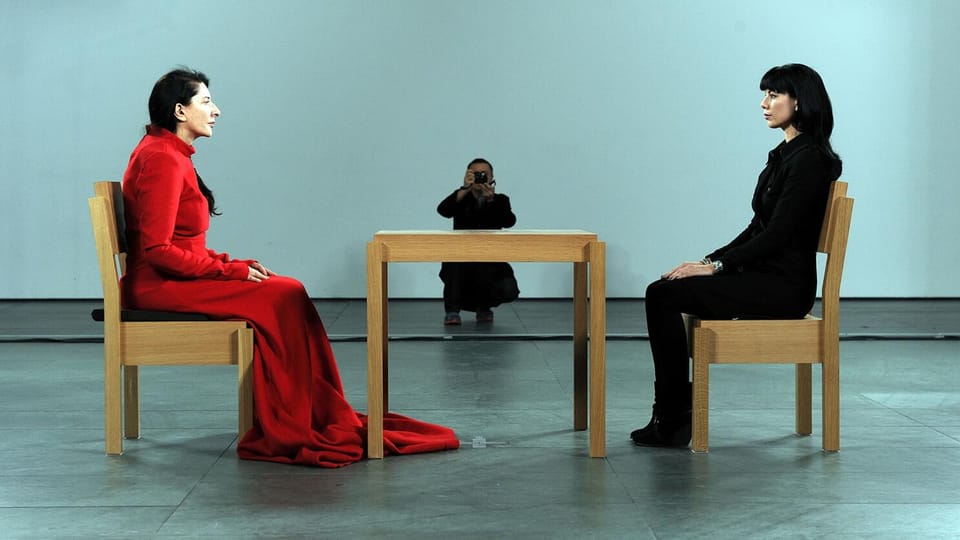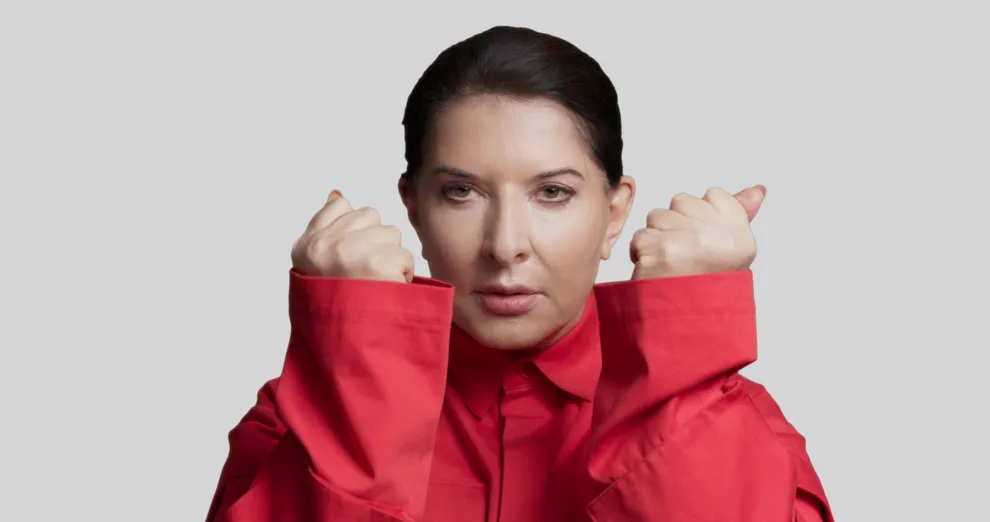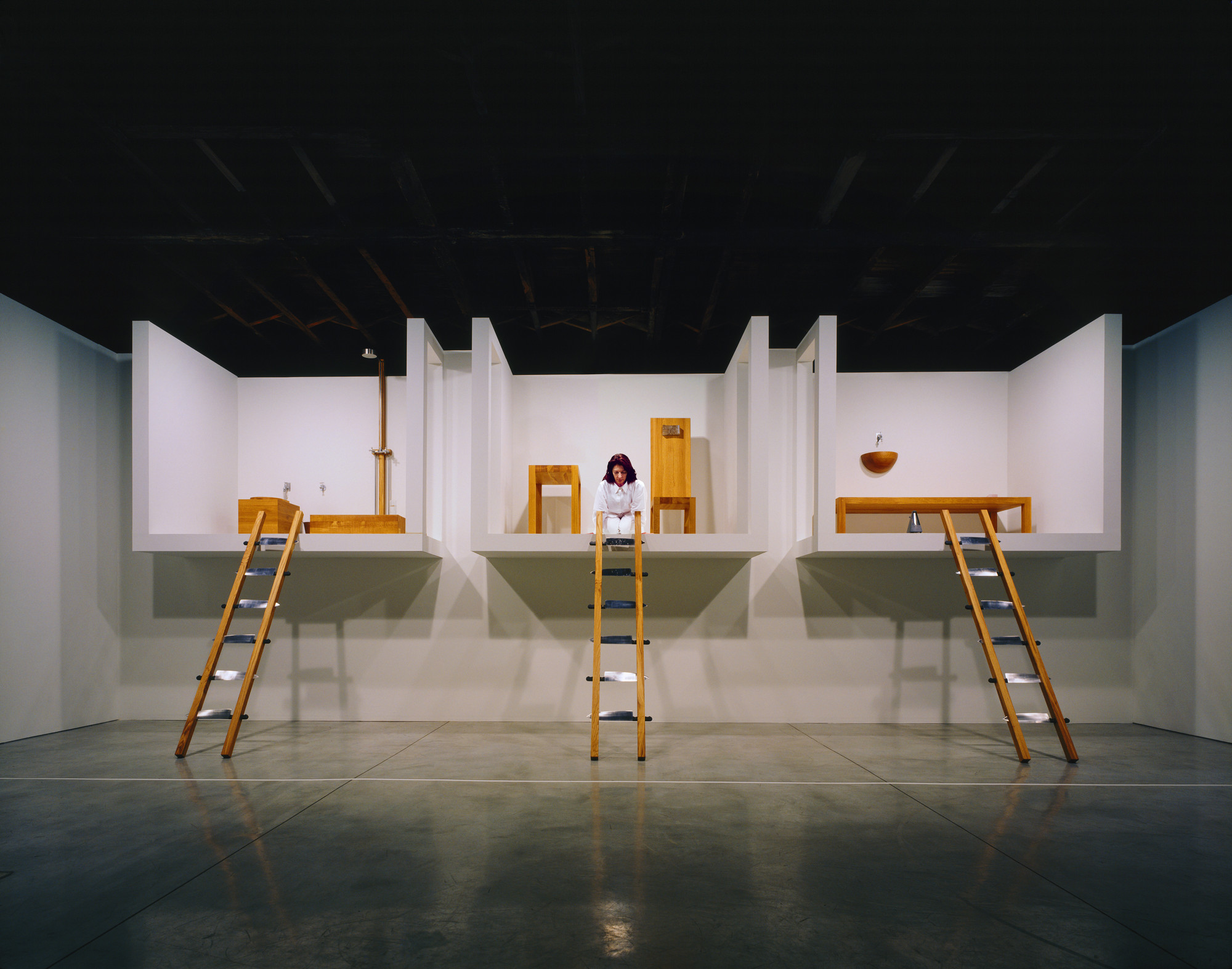Marina Abromović, Performance Art, and the Importance of Presence

I'm guilty. Of neglecting a top-tier museum practically in my backyard. Despite its proximity, I've visited out-of-state museums more frequently. It's a classic case of "out of sight, out of mind”—the same sad excuse I've used with my long-overdue trip to the Upper Peninsula.
My recent visits to the DIA haven't been about the art itself, but rather the art lectures. For our latest visit, we attended The History of Long Durational Works of Art by the renowned Serbian performance artist Marina Abramović. An easy guess, but yes, it was not I who found this lecture and booked the tickets.
That’s not to say I didn’t know about Marina Abramović and her work, it was merely at a lamentable level. As if I once bumped into someone who was thinking really hard about her, and passed a little on to me through osmosis.[1]

Rhythm 0
Instructions:
There are 72 objects on the table that one can use on me as desired.
Performance:
I am the object.
During this period I take full responsibility.
There are a few of her famous works that I think are worth mentioning here. First is Rhythm 0 (1974). For this performance she spent 6 hours in front of the public with 72 objects ranging from feathers and honey, to knives and a firearm with a single bullet. The goal was simple, with total impassivity on her side, and assuring the audience no repercussions for anything they did to her, how far would they, and humanity, go?
As she recalled during the lecture, at first everything was mild and the audience still a little timid. But as time progressed and the realization set in that there would truly be no consequences for their actions, it quickly got more violent. People cut and removed her clothes, stuck rose thorns in her stomach, and one person even grabbed and loaded the gun but was subdued by another. When the time was up and her passivity no longer required, her first step was enough to send the crowd running; running away from confrontation and the comprehension of their actions.
The House with the Ocean View

For this 2002 performance, Marina spent 12 days living on three platforms installed five feet above the ground in the Sean Kelly Gallery, which represented her house with a bathroom, living room, and sleeping room. During this time she was on full display for the audience; never leaving the gallery and drinking only water. The ladders leading up to the platforms had knives for rungs (edge side up), representing her inability to leave.
She says this was an effort on personal purification through endurance and perseverance, knowing that any time someone goes through something extremely difficult they come out changed. What I found most interesting though, was one of her comments during the lecture about how she used the opportunity to work on her “presence.” A philosophy that is used throughout a lot of her work, to recenter her presence in the current moment she would walk to the edge of the platform and stand, teetering over the knife-edge stairs. Nothing like the threat of death or serious maiming to intensify your focus.
The Point?
This was, after all, a lecture. So what did I learn? A highlight of talks and topics like this is that it’s about more than just facts and figures. Nobody is testing me afterwards on the year Rhythm 0 was performed, exactly how long The House with the Ocean View went on for, or anything of the like. The important thing is that it inspired me to think differently, or at least more critically, than I did before.
“I always believed that the function of art is the function of the bridge. To bridge different people from different social backgrounds. Different religious beliefs. Different races. But it is also about communication between physical world and spiritual world. Or simply between two human beings.” — Marina Abramovic
Her work and impact goes much deeper than what I’ll mention here, but my favorite aspect was the focus on, and importance of, presence.
Presence. What does this mean? A simple definition would say it’s the state or act of being fully engaged in the current moment. Sounds easy in theory, but is very hard in practice. Especially now in our modern, fast-paced, digital world where distractions are abundant. We’ve created a culture where multi-tasking is rewarded, and taking a moment to do “nothing” is looked down upon. And at the same time we overzealously diagnose and prescribe without changing the root of the problem.
To be clear, I don’t think the act of presence clashes with daydreaming and mind-wandering, it just ensures it occurs at appropriate times. I find daydreaming and letting your mind wander extremely important—many of the best ideas and solutions to problems come from here. However, when you let that happen while your significant other is telling you about their day, it’s clear that’s a recipe for disaster.
There are a few moments I can count on where I know I’ll be fully present. While out for a run it’s easy to get lost in the rhythmic beat of my shoes on pavement, steady whispers of breath, and the rustling wind. It’s my version of meditation. Or out on the golf course with friends. Especially in the stillness of a morning round where the sun has just barely crept over the horizon, birds are starting their morning song, and dew still clings to the grass. Although, as the Rocky Mountain water begins to flow, that effect might be lost a little. And I’d be remiss to not mention the many moments with V. Dinners enveloped in conversation. Strolls down a new city street we’re exploring. Anything on a beach by the ocean.
There’s something common amongst all these examples. They are sans technology. I think that’s one of the easiest steps to improve your presence in a moment. Keep your phone in your pocket. That’s not to say technology is bad. Someone asked Marina this question during the Q&A, and her answer was spot on. Technology in itself is not bad; it’s our relationship with technology that is bad. Advances in tech have improved our lives greatly. Let it not also be the shackle that blinds us from experiencing our lives.
Was this email forwarded to you? Subscribe here!




Comments ()